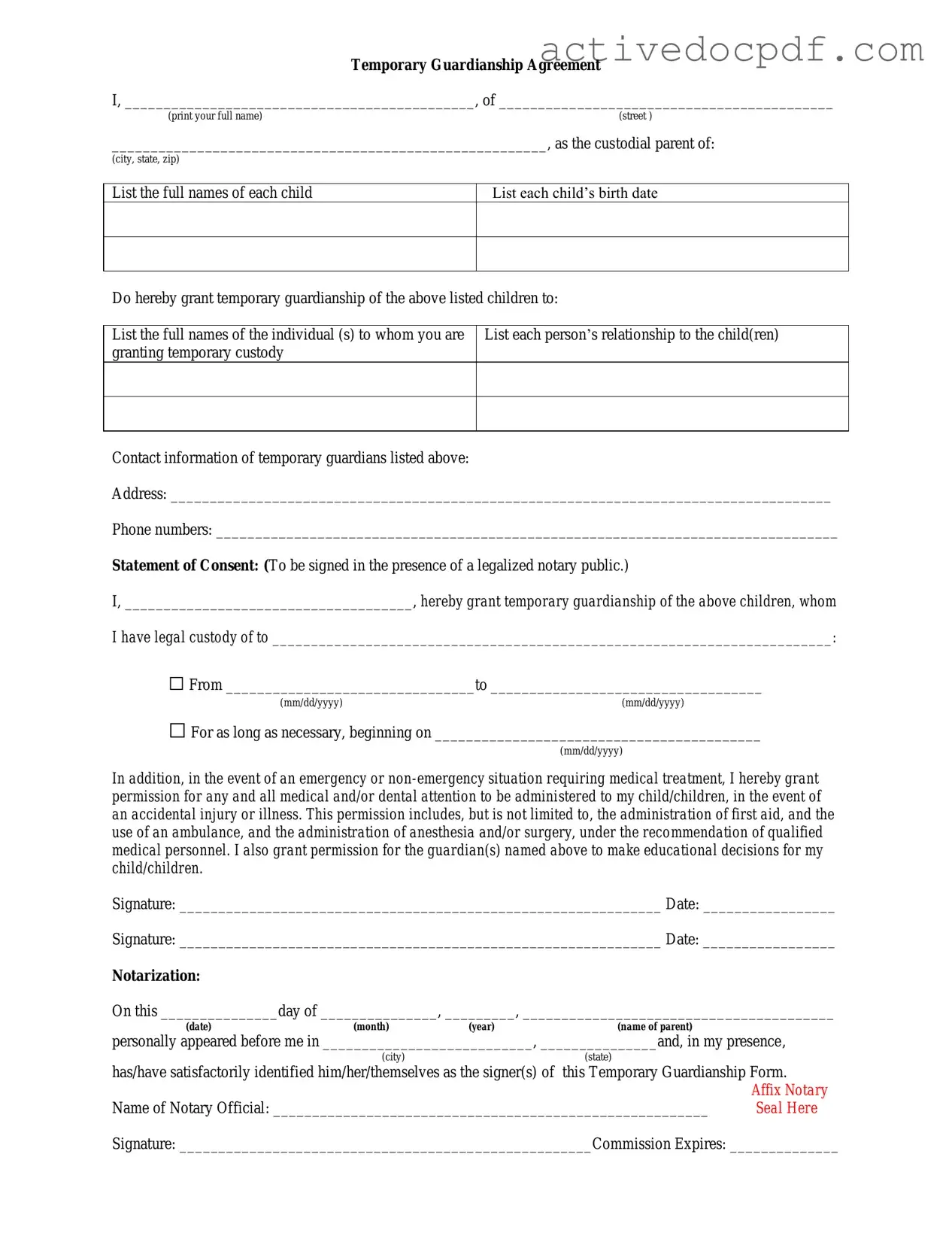A Temporary Custody form is a legal document that allows one parent or guardian to request temporary custody of a child. This form is typically used in situations where immediate changes in custody are necessary, such as during a separation or when a child’s safety is at risk. It is designed to provide a clear outline of the custody arrangement until a more permanent decision is made by the court.
Generally, a parent or legal guardian can file a Temporary Custody form. In some cases, other relatives, such as grandparents or aunts and uncles, may also seek temporary custody if they can demonstrate that it is in the best interest of the child. The individual filing must show that the current custody situation is not suitable or safe for the child.
To complete a Temporary Custody form, you will typically need the following information:
-
The full names and addresses of the child and the parents or guardians.
-
The reasons for requesting temporary custody.
-
Details about the child's current living situation.
-
Any relevant history of custody arrangements.
-
Information about any previous court orders regarding custody.
Providing accurate and complete information is essential for the court to make an informed decision.
How long does temporary custody last?
The duration of temporary custody can vary. It usually lasts until a court hearing is held, where a judge will review the case and make a final decision on custody arrangements. This period can range from a few weeks to several months, depending on the court's schedule and the specifics of the case.
After filing the Temporary Custody form, the court will schedule a hearing. Both parents or guardians will have the opportunity to present their case. The judge will consider the evidence and arguments before making a decision. It is important to attend this hearing and be prepared to discuss why the temporary custody arrangement is necessary.
Can the Temporary Custody arrangement be modified?
Yes, a Temporary Custody arrangement can be modified. If circumstances change, either parent can request a modification by filing a new form with the court. The court will review the request and determine whether the changes are in the best interest of the child. It's important to document any changes in circumstances that may warrant a modification.
